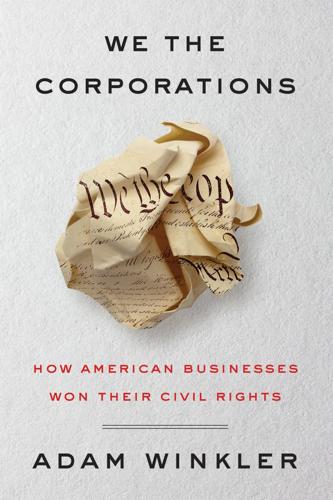
We the Corporations: How American Businesses Won Their Civil Rights
by
Adam Winkler
Published 27 Feb 2018
Not surprisingly, then, Powell’s Memorandum identified Nader as “the single most effective antagonist of American business.”13 Under the title “Attack on American Free Enterprise System,” the Powell Memorandum insisted that “no thoughtful person can question” whether capitalism was under siege from within. The “extremists of the left,” including “Communists, New Leftists and other revolutionaries” in the universities and the media were “waging ideological warfare against the enterprise system.” To counter Nader and his powerful reform movement, the Powell Memorandum advised that “it is essential that spokesmen for the enterprise system—at all levels and at every opportunity—be far more aggressive than in the past.”
…
The Reagan Revolution of 1980, which was built around the vision articulated in the Powell Memorandum, ushered in a conservative era committed to free markets, small government, pro-business tax policies, and deregulation of industry. The shift was so profound that it shaped the agendas of both major political parties. In the early 1990s, Democrats, fearful after losing five of the previous six presidential elections, also adopted more centrist, business-friendly rhetoric in an effort to regain their Election Day competitiveness. One of Powell’s most lasting influences was on the role of business advocates before the Supreme Court. Following the Powell Memorandum’s suggestion, the Chamber of Commerce established its own law firm, the National Chamber Litigation Center (NCLC) in 1977, just as the Bellotti case was wending its way up through the courts.
…
In August, two months before he was nominated to the Supreme Court, Powell wrote a lengthy memorandum for the Chamber of Commerce outlining the threats posed by the likes of Nader to the free enterprise system and detailing how business should fight back. Although the memorandum was not discovered until a year after Powell’s confirmation, once revealed it became a rallying cry for business leaders across the country. Indeed, the Powell Memorandum became an influential strategic planning document of the emerging New Right—a coalition of free market advocates and religious conservatives that swept Ronald Reagan into the White House in 1980, pushed for deregulation of industry, and reasserted the influence of business in American politics.4 At the luncheon, Joe Cullman teased Lewis F.
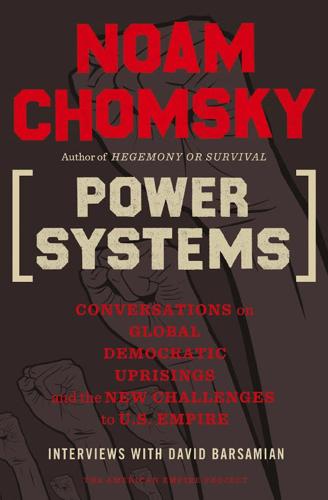
Power Systems: Conversations on Global Democratic Uprisings and the New Challenges to U.S. Empire
by
Noam Chomsky
and
David Barsamian
Published 1 Nov 2012
There was an “excess of democracy.”8 Looking for answers—that’s frightening. There was an immediate backlash in the 1970s, and we’re still living with the results. All of this is well documented. Two of the striking documents, which I think are very much worth reading, from opposite ends of the spectrum, are, on the Right, the Powell memorandum and, on what’s called the Left, the Trilateral Commission report. Lewis Powell was a corporate lobbyist for the tobacco industry who was very close to Nixon, who later appointed him to the Supreme Court. In 1971, he wrote a memorandum to the Chamber of Commerce, the main business lobby.9 It was supposed to be secret but it leaked.
…
., 99, 110 Paul, Rand, 157, 162, 163 Paul, Ron, 75, 124–25, 157, 163 pensions, 12, 22, 24, 26 Peres, Shimon, 93 Peshawar, 16 pharmaceutical companies, 107–8 Philippines, 4, 17 Pinochet, Augusto, 61 piracy, 107–8 political Islam, 49, 61 Political Science Quarterly, 82 police repression, 119–20 politics, 32, 41, 57, 59, 121, 142–45, 171 electoral, 102–3, 117–19 labor demonstrations and, 41–43 poverty, 6, 66, 82, 84 Powell, Colin, 115 Powell, Lewis, 150–51 Powell memorandum, 150–51 power systems, 34–35, 69 aristocrats and democrats, 160–78 chains of submission and subservience, 34–43 global shift, 5–13, 58, 76–77 language and education, 126–59 mental slavery, 101–25 new American imperialism, 1–33 uprisings, 44–64 privatization, 11, 38, 39, 40, 156–57, 167 Progressive Labor (PL), 73 propaganda system, 35–40, 66, 80, 82, 102, 119, 122–24 property rights, 84, 85 public, power of the, 78–81 public education, 37–39, 147–48, 153–56, 166–68 public relations, 35, 79–81, 102–3 Qasim, Abd al-Karim, 61 Race to the Top, 153 racism, 3, 31, 92 Ravitch, Diane, 154 Reagan, Ronald, 62, 71, 82, 95, 99 recession, 23, 48, 86–89 Red Scare, 23, 68, 120 Reich, Robert, 170, 172 Reilly, John, 122 Republican Party, 41, 57, 75, 76, 124, 125 Revolutionary Armed Forces of Colombia (FARC), 72 Ribbentrop, Joachim von, 115 Right, 23, 32, 150–51 Riyadh, 52 Romney, Mitt, 57–58, 75 Roosevelt, Franklin D., 14, 23, 54 Roy, Arundhati, 22, 29, 31 Russia, 17–18, 20, 50, 61, 98, 102, 145 rustbelt, 11–12 Saharawi movement, 46 saltwater fallacy, 3–4 Saudi Arabia, 21, 49, 52, 61, 99, 111, 144 science, 142–43, 144 education, 154–55 modern, 143 sectarianism, 73–74 Seib, Gerald, 54 self-destruction, 42–43 Senate, U.S., 63, 85 sensory deprivation, 134–35 Shiites, 52–53 Singh, Manmohan, 19 Sino-Indian War, 20 slavery, 3, 34, 36, 51 end of, 34, 35, 36 mental, 34–35, 101–25 Slim, Carlos, 11 Smith, Adam, 8–9 social Darwinism, 157 social media, 105, 107, 145–47 Social Security, 39, 156–57 solidarity, 38–41, 146–47, 159 South Africa, 21, 50–51 apartheid, 71 South America, 6, 7, 57, 60, 161 Southeast Asia, 4, 60 South Korea, 9, 17 Spain, 4, 6, 33, 87 sports, college, 154–55 Stack, Joseph, 25–26, 29 Stalin, Joseph, 61 Stohl, Bev, 105 Stop Online Piracy Act, 107 strategic hamlets, 2 student activism, 73–74 submission and subservience, chains of, 34–43 Summit of the Americas (2012), 160–61 sunbelt, 11, 12 Sunnis, 52–53 Supreme Court, U.S., 70, 150 Buckley v.
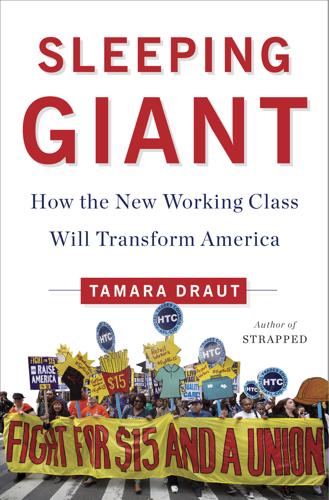
Sleeping Giant: How the New Working Class Will Transform America
by
Tamara Draut
Published 4 Apr 2016
Hacker and Paul Pierson, Winner-Take-All-Politics: How Washington Made the Rich Richer and Turned Its Back on the Middle Class (New York: Simon and Schuster, 2010). 12. Lewis Powell, “Attack on American Free Enterprise System,” August 23, 1971. The Washington and Lee University School of Law, which Lewis Powell attended, maintains an archive of his writing and work. The complete text of the Powell Memorandum is available on the school’s website at http://law2.wlu.edu/powellarchives/page.asp?pageid=1251, and from many other sources on the Internet. 13. Hacker and Pierson, Winner-Take-All-Politics, p. xxx. 14. Blair Bowie and Adam Lioz, “Billion-Dollar Democracy: The Unprecedented Role of Money in the 2012 Elections,” Demos, June 2013, at http://www.demos.org/sites/default/files/publications/billion.pdf. 15.
…
Kim Phillips-Fein, Invisible Hands: The Businessmen’s Crusade Against the New Deal (New York: W. W. Norton & Company, 2010), p. 153. 27. Ibid., pp. 151–56. 28. Lewis Powell, “Attack on American Free Enterprise System,” August 23, 1971. The Washington and Lee University School of Law, which Lewis Powell attended, maintains an archive of his writing and work. The complete text of the Powell Memorandum is available on the website http://law2.wlu.edu/powellarchives/page.asp?pageid=1251, and from many other sources on the Internet. 29. Phillips-Fein, Invisible Hands, p. 154. 30. Jacob S. Hacker and Paul Pierson, Winner-Take-All-Politics: How Washington Made the Rich Richer and Turned Its Back on the Middle Class (New York: Simon and Schuster, 2010), p. 116. 31.
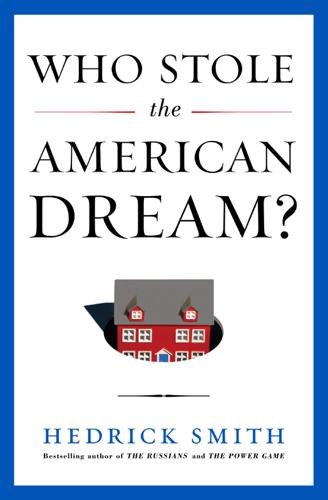
Who Stole the American Dream?
by
Hedrick Smith
Published 10 Sep 2012
Often a watershed is crossed in some gradual and obscure way so that most people do not realize that an unseen shift has moved them into a new era, reshaping their lives, the lives of their generation, and the lives of their children, too. Only decades later do historians, like detectives, sift through the confusing strands of the past and discover a hitherto unknown pregnant beginning. One such hidden beginning, with powerful impact on our lives today, occurred in 1971 with “the Powell Memorandum.” The memo, first unearthed by others many years ago, was written by Lewis Powell, then one of America’s most respected and influential corporate attorneys, two months before he was named to the Supreme Court. But it remains a discovery for many people today to learn that the Powell memo sparked a business and corporate rebellion that would forever change the landscape of power in Washington and would influence our policies and economy even now.
…
rgn=div1;view=fulltext. 6 We have gone off track Naftali Bendavid, “Country Is Headed in Wrong Direction, 74% Say,” The Wall Street Journal, October 13, 2011; “Just 1 in 5 Americans Happy with Direction of Country,” CBS News poll, October 3, 2011, http://www.cbsnews.com. 7 One such hidden beginning Lewis F. Powell, Jr., memorandum, “Attack on American Free Enterprise System,” August 23, 1971, http://law.wlu.edu/deptimages/Powell%20Archives/PowellMemorandumTypescript.pdf. 8 “America is coming apart at the seams” Charles Murray, Coming Apart: The State of White America, 1960–2010 (New York: Crown Forum, 2012), 11, 12. 9 “Mind-boggling” in its magnitude Alan Krueger, “The Rise and Consequences of Inequality in the United States,” remarks, Center for American Progress, January 12, 2012, http://www.americanprogress.org/events/2012/01/pdf/krueger.pdf.
…
CHAPTER 1: THE BUSINESS REBELLION 1 “The danger had suddenly escalated” Thomas Byrne Edsall, The New Politics of Inequality (New York: W. W. Norton & Co., 1984), 113–14. 2 “There has been a significant erosion” Ibid., 13. 3 “Revolt of the Bosses” Ted Nace, Gangs of America: The Rise of Corporate Power and the Disabling of Democracy (San Francisco: Berrett-Koehler, 2003), 137–51. 4 Powell warned the corporate community Powell, memorandum, “Attack on American Free Enterprise System,” August 23, 1971, http://www.aspenlawschool.com. 5 Business was being victimized Ibid. 6 “Business must learn the lesson” Ibid. 7 In a private session Nixon meeting with Henry Ford II and Lee Iacocca, White House tapes, cited in Tom Wicker, One of Us: Richard Nixon and the American Dream (New York: Random House, 1991), 515. 8 Nixon administration was swept along Jacob S.
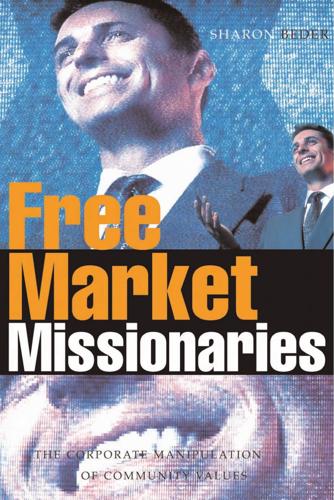
Free Market Missionaries: The Corporate Manipulation of Community Values
by
Sharon Beder
Published 30 Sep 2006
It was then that a free-market orthodoxy established its ascendancy over American public culture. . . It has gone far towards establishing itself as the unofficial American civil religion. JOHN GRAY1 Joseph Coors, who had made a great deal of money from the beer brewing corporation his grandfather founded, was one of those inspired by the business battle plan in the Powell Memorandum: ‘Coors recalls that the Powell memorandum “stirred” him up and convinced him that American business was “ignoring” a crisis.’2 In 1973 Coors, angry after being found guilty of price fixing, unlawful limitation of competition and other illegal practices by the Federal Trade Commission, invested $250,000 of Coors Corporation money to start the Heritage Foundation.
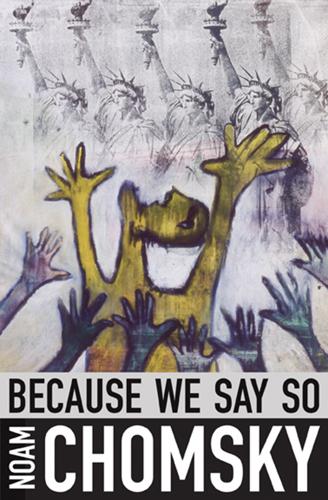
Because We Say So
by
Noam Chomsky
Higher education has become a target for right-wing ideologues and the corporate elite because it is capable of teaching students how to think critically, and it offers the promise of new modes of solidarity to students outside of the exchange value proffered by neoliberal instrumentalism and the reduction of education to forms of training. In a wide-ranging and brilliant essay on higher education in this book, Chomsky not only lays out the reasons why public education is under attack, but also provides a critical reading of those historical forces such as the Trilateral Commission and the Powell memorandum of 1971, which made quite clear that the purpose of education was to “indoctrinate the young.” He then points to the various measures used by the financial elite and the right wing, extending from defunding the university and imposing a corporate business model on it to disempowering faculty, destroying unions and eliminating tenure for the vast majority to disciplining students by burdening them with overwhelming debt.
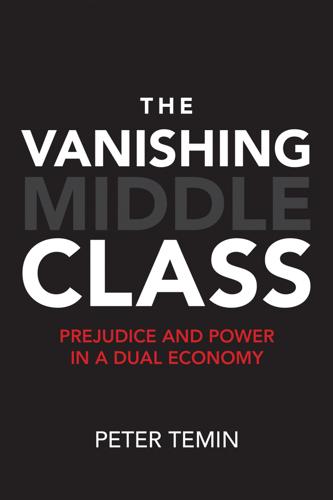
The Vanishing Middle Class: Prejudice and Power in a Dual Economy
by
Peter Temin
Published 17 Mar 2017
The final row shows the top 1 percent of the top 1 percent of the top 1 percent of the population. They are members of the Forbes 400, a list published annually of the richest people in America.1 They also are the people who have tried for many years to transform their ideas about the role of government into public policy. The 1971 Powell Memorandum was a call to arms to business leaders that began a complex dance between these groups of rich people that can be clarified by describing the politics of people in the last three rows of table 1 in turn. The Investment Theory of Politics asserts that people invest in policies that benefit them.

Geek Heresy: Rescuing Social Change From the Cult of Technology
by
Kentaro Toyama
Published 25 May 2015
Internet.org’s announcement is available at Internet.org (2013). 7.Duncan (2012). 8.Sachs (2008). 9.Clinton (2010). 10.DeNavas-Walt et al. (2009), p. 13, provide the US Census Bureau’s graph of poverty. Incidentally, it seems that something quietly devastating began in the early 1970s. Commentators in a range of fields cite that period as the turning point where America (and possibly the Western world as a whole) began to decline. Hedrick Smith (2013) blames the 1971 Powell memorandum for turning corporations into narrowly selfish, power-hungry profit seekers. Political scientists Jacob Hacker and Paul Pierson (2010) blame a political system bent to the will of the wealthy. PayPal cofounder Peter Thiel (2012), 39:30, says technological advance has decelerated since the early 1970s (except in the computer industry).
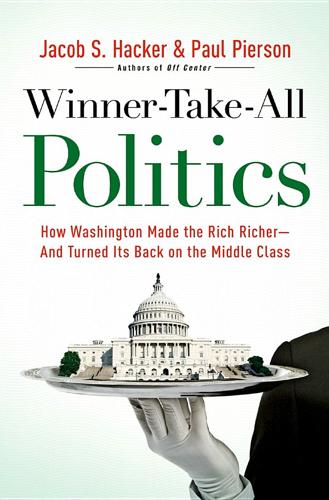
Winner-Take-All Politics: How Washington Made the Rich Richer-And Turned Its Back on the Middle Class
by
Paul Pierson
and
Jacob S. Hacker
Published 14 Sep 2010
., 17, 34, 41, 53, 105, 152, 157, 183, 186, 192, 193, 195, 200, 201, 210, 213, 214, 216, 217, 219, 221, 222, 223, 230, 233, 234, 236, 238–39, 245, 250–51, 253, 254–55, 258, 264, 265, 266, 271, 280, 293–94, 304 business: anti-labor agenda of, 55, 121–24, 127–32, 135, 219, 303 conservative support for, 122–23 Democrats supported by, 53, 86, 127, 129–32, 140, 174–88, 220–21, 223–52 economic reforms opposed by, 79–80, 86, 87–88, 130–32 financial resources of, 74, 121–22, 131, 170–72, 179–80, 209 “grassroots” campaigns by, 66, 89, 114, 119–27, 131, 144, 179–80, 274 inside vs. outside strategies of, 121 large, 119–27, 128, 129–32, 179–80, 205–6, 231, 275–78, 279 lobbyists for, 89, 117, 118, 124–26, 135–36, 144, 183–84, 198, 205–7, 218, 238–39, 275–77 organizations for, 88, 104–7, 116–36, 144, 160, 179–80, 205–6, 231, 275–78, 279, 291; see also specific organizations political influence of, 65–66, 74, 79, 84–85, 104–7, 110–12, 116–36, 150–51, 160, 169, 170–72, 179–80, 183–84, 197–98, 207, 230–31, 242–43, 271–75, 282, 292–93, 304 Powell memorandum on, 117–18, 119, 125 regulation of, 55–56, 116–36, 179–80, 187, 205–6, 219–21, 246–47, 273–77 Republicans supported by, 34, 49, 53, 65, 86, 121–26, 129–32, 140, 157, 170, 174–88, 189, 194–222, 230–31, 244–46, 267 small, 119–20, 129–30, 131, 205–6, 243 tax reform opposed by, 47, 49, 50, 64, 106–7, 124–25, 132–34, 177, 179–80, 187, 312n see also corporations business cycles, 17–18 Business-Industry Political Action Committee, 122 Business Roundtable, 120, 121, 125, 126–27, 129–30, 205–6, 231 Byrd, Robert, 130–31 cable networks, 106, 156–57, 158 California, 84, 176, 240, 247, 300 Campaigns and Elections, 203 campaign spending, 66, 118, 121–22, 150–51, 163–64, 166, 167, 169, 170–84, 197–98, 203, 207, 209–10, 219, 223–52, 258–59, 271–75, 276, 304 Campbell, Anne, 176 Canada, 29, 31, 38–39, 52, 58, 60, 68 Cao, Joseph, 337n capital gains, 14, 16, 18, 39, 46, 50–51, 99–100, 133–34, 151, 214, 228–30, 312n Carlson, Tucker, 147 Carlton Group, 133–34 “carried interest” provision, 51, 228–29 Carter, Jimmy, 98–100, 116, 126–27, 130, 131, 132–33, 134, 137, 141, 152, 172–73, 175, 184, 186, 202, 255 Carville, James, 5 Cato Institute, 209 Census Bureau, U.S., 13, 311n Center for American Progress, 266 Center for Responsive Politics, 207, 227 Chafee, Lincoln, 265 Chamber of Commerce, 119, 127, 128, 129–30, 205–6, 231, 275–78, 279 Cheney, Dick, 189–90, 217 chief executive officers (CEOs): autonomy of, 231, 292–93 conflicts of interest of, 55, 66 incomes of, 1, 16, 56, 62, 66–67, 154–55, 198 international comparison of, 62–65 organizations for, 119–21 pay packages for (executive compensation), 2, 57, 61–66, 70, 198, 219–21, 246–47, 279, 319n, 320n, 335n political influence of, 117–19 retirement benefits of, 64 Chiles, Lawton, 131, 181 Christian Coalition, 203 Christian Conservatives; see Religious Right Christian Right, 139, 146–49, 160, 201–4, 205, 234–35 Church, Frank, 175 Citigroup, 71, 226, 249–50, 254, 261 Citizens United case, 293 Civic Culture, The (Almond and Verba), 144 civic groups, 107–12, 139, 143–45, 147, 155, 156, 158 civil rights movement, 95, 138, 139, 190, 202, 235, 275 class divisions, 29, 75–77, 131–32, 148, 151–55 see also specific classes Class War?
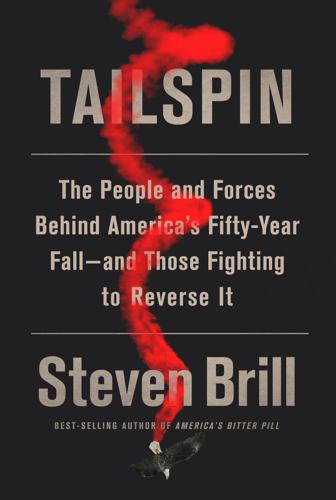
Tailspin: The People and Forces Behind America's Fifty-Year Fall--And Those Fighting to Reverse It
by
Steven Brill
Published 28 May 2018
Illustration Credits 1 Office of Public Affairs, Yale University, Photographs of Individuals (RU 686), Manuscripts and Archives, Yale University Library 2 Courtesy of Yale Law School 3 Jason Torres 4 Mathieu Asselin 5 Courtesy of Harvard Business School 6 The American Lawyer, vol. 1, no. 1, February 1979 7 Courtesy Wachtell, Lipton, Rosen & Katz; photographer: Sasha Maslov 8 Tom Toro, The New Yorker Collection/The Cartoon Bank 9 Jimi Celeste / Patrick McMullan / Getty Images (Getty Image #: 591768566) 10 Courtesy of Better Markets 11 Keystone Pictures USA / Alamy Stock Photo (Alamy Image #: E0XDNK) 12 Courtesy of Northwestern University Pritzker School of Law / Jasmin Shah 13 Harold Shapiro 14 Courtesy of Issue One 15 Washington and Lee University Library: Lewis F. Powell, Jr., “The Memo” (1971); Powell Memorandum: Attack on American Free Enterprise System, 1 16 House.Sinema.Gov 17 Alexei Agaryshev 18 Photograph by Diana Walker / Time & Life Pictures / Getty Images (Getty Image #: 53366136) 19 Courtesy of the Bipartisan Policy Center 20 Visions of America, LLC / Alamy Stock Photo (Alamy Image #: AHTDJE) 21 Ramin Talaie / Corbis / Getty Images (Getty Image #: 526380254) 22 Larry Downing / Sygma / Getty Images (Getty Image #: 590865840) 23 Scott J.

Evil Geniuses: The Unmaking of America: A Recent History
by
Kurt Andersen
Published 14 Sep 2020
Conspiracy theories, because they tend to emulate fiction, often imagine Dan Brownian plots with great secrets at their centers. But from 1972 on, Justice Powell’s playbook wasn’t secret at all. For instance, in a 1974 speech Charles Koch gave to business executives in Dallas, he quoted its final line—“As the Powell Memorandum points out,” he said, without further explanation, “ ‘business and the enterprise system are in trouble, and the hour is late.’ ” He assumed that everyone in his audience was familiar with it. Almost nobody else was paying much attention to the new movement and generational project for which Powell’s memo was a piece of founding scripture.

The Rise and Fall of the Neoliberal Order: America and the World in the Free Market Era
by
Gary Gerstle
Published 14 Oct 2022
But the public release of the Powell memo was a gift to the neoliberal movement for it served as a rallying point for the many businesspeople, intellectuals, and would-be policymakers who wanted to restore free enterprise and free markets to the center of American life. John M. Olin, a onetime chemical magnate who had established the Olin Foundation in 1953, now redoubled the efforts through his foundation to mount ideological defenses for free market capitalism. “The Powell memorandum,” he wrote, “gives reason for a well organized effort to re-establish the validity and importance of the American free enterprise system.”2 Joseph Coors Jr., part of a team of brothers who owned the Colorado-based Coors Brewery Company, was also inspired by the Powell memo.3 In 1973, he, along with Paul Weyrich, founded the Heritage Foundation as a think tank charged with promoting free market principles and policies.
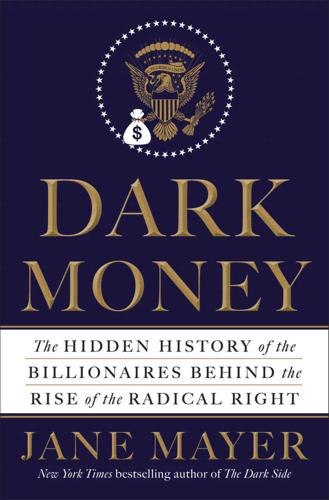
Dark Money: The Hidden History of the Billionaires Behind the Rise of the Radical Right
by
Jane Mayer
Published 19 Jan 2016
— In Wichita, meanwhile, where he was rapidly expanding his family’s company and searching for more effective means than electoral politics with which he could spread libertarianism, Charles Koch, too, was galvanized by Lewis Powell. In 1974, Charles gave a speech to a group of businessmen gathered at a hotel in Dallas, quoting Powell. “As the Powell Memorandum points out,” Koch warned the group, “business and the enterprise system are in trouble, and the hour is late.” Koch urged his fellow business leaders to “undertake radical new efforts to overcome the prevalent anti-capitalist mentality.” He declared that “the development of a well-financed cadre of sound proponents of the free enterprise philosophy is the most critical need facing us today.”
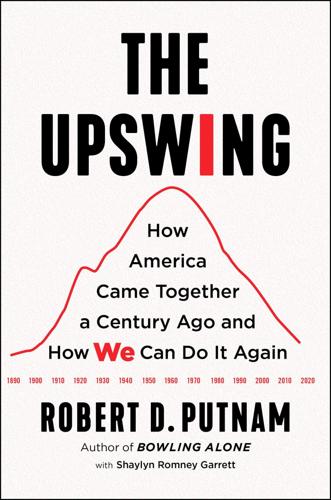
The Upswing: How America Came Together a Century Ago and How We Can Do It Again
by
Robert D. Putnam
Published 12 Oct 2020
We return to the issue of race and polarization in Chapter 6. 56 These six key votes were Obama’s stimulus package, Dodd-Frank financial regulation, Lily Ledbetter gender pay equity, Obamacare (first creating it and then overturning it), and the 2017 Trump tax cuts. 57 See Jane Mayer, Dark Money: The Hidden History of the Billionaires Behind the Rise of the Radical Right (New York: Doubleday, 2016); Theda Skocpol and Alexander Hertel-Fernandez, “The Koch Network and Republican Party Extremism,” 14, no. 3 (September 2016): 681–99, doi:10.1017/S1537592716001122; and https://en.wikipedia.org/wiki/Lewis_F._Powell_Jr.#Powell_Memorandum. 58 McCarty, Polarization, 3. Thomas E. Mann and Norman J. Ornstein, It’s Even Worse than It Looks: How the American Constitutional System Collided with the New Politics of Extremism, new and expanded edition (New York: Basic Books, 2016), also have emphasized the asymmetry of the recent polarization.